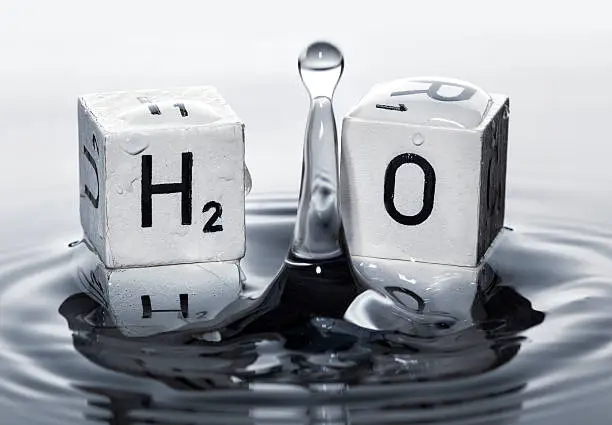
In the realm of chemical compounds, even the smallest molecular changes can lead to groundbreaking discoveries. One such combination that is drawing increased attention is hcooch ch2 h2o. Though not commonly discussed in everyday conversation, this chemical configuration has wide-reaching implications in both industrial and academic fields.
This article explores hcooch ch2 h2o in depth—its molecular makeup, scientific relevance, applications, and how it could shape future innovations. Whether from a chemistry background or simply curious, this comprehensive guide aims to clarify and showcase the true importance of hcooch ch2 h2o.
What Is HCOOCH CH2 H2O?
The term hcooch ch2 h2o appears to represent a group of simple organic compounds in a hydrated state. Broken down into parts:
- HCOOCH suggests a formate ester group (possibly methyl formate or similar).
- CH2 is a methylene group, commonly seen in countless organic molecules.
- H2O indicates water, often suggesting hydration or aqueous interaction.
Together, hcooch ch2 h2o points toward a compound or reaction environment where formate esters, methylene groups, and water interact chemically or physically.
Molecular Interpretation of HCOOCH CH2 H2O
In organic chemistry, context is everything. HCOOCH CH2 H2O can be interpreted in multiple ways depending on how the molecule is constructed:
1. Hydrolysis of Esters
In the presence of water, many esters undergo hydrolysis. If HCOOCH is methyl formate, for example, the reaction with water would yield methanol and formic acid. Adding CH2 might indicate a more complex ester or a transitional intermediate.
2. Reaction Intermediates
CH2 in hcooch ch2 h2o might represent a methylene bridge connecting two reactive centers—possibly involved in polymerization or condensation reactions.
3. Hydrated Molecular Structure
In some contexts, hcooch ch2 h2o could signify a hydrated form of an organometallic or organic compound, where water stabilizes the structure through hydrogen bonding or ionic interactions.
Importance of Studying HCOOCH CH2 H2O
Why does hcooch ch2 h2o matter? Several reasons support its growing importance in modern chemistry:
🔬 1. Understanding Molecular Behavior
Studying how compounds like hcooch ch2 h2o behave under different conditions helps in developing more efficient chemical reactions.
⚗️ 2. Industrial Relevance
Compounds in the hcooch ch2 h2o family may be precursors or intermediates in producing solvents, fuels, or plasticizers.
🌿 3. Green Chemistry Applications
If hcooch ch2 h2o reactions yield low-toxicity byproducts or operate at mild conditions, they can become a part of sustainable and eco-friendly chemical processes.
💡 4. Educational Value
For chemistry students and researchers, exploring structures like hcooch ch2 h2o sharpens analytical thinking and deepens understanding of reaction mechanisms.
How HCOOCH CH2 H2O Reacts
The behavior of hcooch ch2 h2o varies based on temperature, solvent, catalysts, and pH. Here are several possibilities:
➤ Acid-Catalyzed Hydrolysis
In the presence of acid and water, formate esters can decompose, especially if hcooch ch2 h2o is acting as a formate compound. The reaction might yield alcohols and acids.
➤ Polymerization Reactions
If CH2 serves as a reactive methylene group, hcooch ch2 h2o could engage in polymer chains or copolymer systems, especially in aqueous environments.
➤ Nucleophilic Substitution
Water as a nucleophile can attack electrophilic carbon centers in hcooch ch2 h2o, causing substitution or rearrangement reactions under proper conditions.
Real-World Applications of HCOOCH CH2 H2O
Though hcooch ch2 h2o might sound like a laboratory-only interest, its principles influence several real-world domains:
🏭 1. Solvent Manufacturing
Many esters related to hcooch ch2 h2o are used as solvents for resins, inks, and coatings. Their controlled hydrolysis offers better formulation flexibility.
🚘 2. Biofuel Synthesis
Some esters serve as biodiesel precursors. If hcooch ch2 h2o can be linked to bio-based molecules, it may contribute to renewable energy development.
🧪 3. Pharmaceutical Intermediates
Reactions involving formate groups and methylene chains are common in medicinal chemistry. Compounds structurally related to hcooch ch2 h2o might be useful in drug synthesis pathways.
🧼 4. Green Cleaning Products
With increasing demand for non-toxic chemicals, ester-based cleaners and degreasers incorporating elements of hcooch ch2 h2o chemistry are being explored.
Analytical Techniques to Study HCOOCH CH2 H2O
To understand hcooch ch2 h2o, chemists employ several analytical methods:
- NMR (Nuclear Magnetic Resonance): For identifying molecular structure and hydrogen placement.
- IR (Infrared Spectroscopy): To detect functional groups and bond vibrations, especially OH and C=O groups.
- GC-MS (Gas Chromatography–Mass Spectrometry): For analyzing decomposition products or reaction intermediates.
- Titration Methods: To track acid/base formation if hcooch ch2 h2o reacts hydrolytically.
These tools confirm hypotheses about how hcooch ch2 h2o behaves in varying chemical environments.
Environmental and Safety Considerations
While the exact identity of hcooch ch2 h2o may vary depending on its chemical arrangement, compounds with similar components often share environmental traits:
- Biodegradability: Esters and their hydrolysis products are often biodegradable, posing less environmental risk.
- Low Volatility: Depending on molecular weight, some forms of hcooch ch2 h2o evaporate slowly, reducing air pollution.
- Mild Toxicity: Many related compounds have low acute toxicity, but always require responsible handling.
Laboratories and industries working with such chemicals follow MSDS (Material Safety Data Sheets) for complete safety protocols.
HCOOCH CH2 H2O in Academic Research
Academic papers and student labs regularly explore reactions involving formate groups and methylene moieties. Research often includes:
- Reaction Kinetics: Studying how quickly hcooch ch2 h2o decomposes or rearranges.
- Catalysis: Finding better catalysts to accelerate transformation reactions involving hcooch ch2 h2o.
- Spectroscopic Signatures: Building libraries of molecular fingerprints to identify related molecules in mixtures.
Research outputs can later be scaled into practical applications, further boosting the scientific relevance of hcooch ch2 h2o.
Future Prospects: Why HCOOCH CH2 H2O Matters
As industries shift toward smarter and more sustainable chemistry, compounds like hcooch ch2 h2o will play a growing role in:
- Designing low-emission fuels
- Creating biodegradable polymers
- Developing lab-on-a-chip chemical systems
- Improving water-based reaction models
Further exploration of hcooch ch2 h2o could unlock new synthetic routes, safer reagents, and more cost-effective processes.
Using Voice to Explore Chemistry
Modern educational platforms and laboratory tools now support voice-based commands. To study hcooch ch2 h2o or run simulations, scientists and students can:
- Speak to activate molecular modeling software
- Use voice search to find compound databases
- Dictate lab notes during experimental work
- Ask AI tutors chemistry-related questions hands-free
Say: “Search for analysis of hcooch ch2 h2o reaction pathways,” and access curated academic resources using only voice input.

Final Thoughts
While hcooch ch2 h2o might not be a household name, its components and potential reactions reflect vital trends in chemistry. From sustainability to scientific curiosity, this molecular structure offers insight into how simple compounds can yield complex outcomes.
Continued study of hcooch ch2 h2o promises advancements not only in academic knowledge but also in real-world applications spanning clean energy, medicine, and manufacturing.





